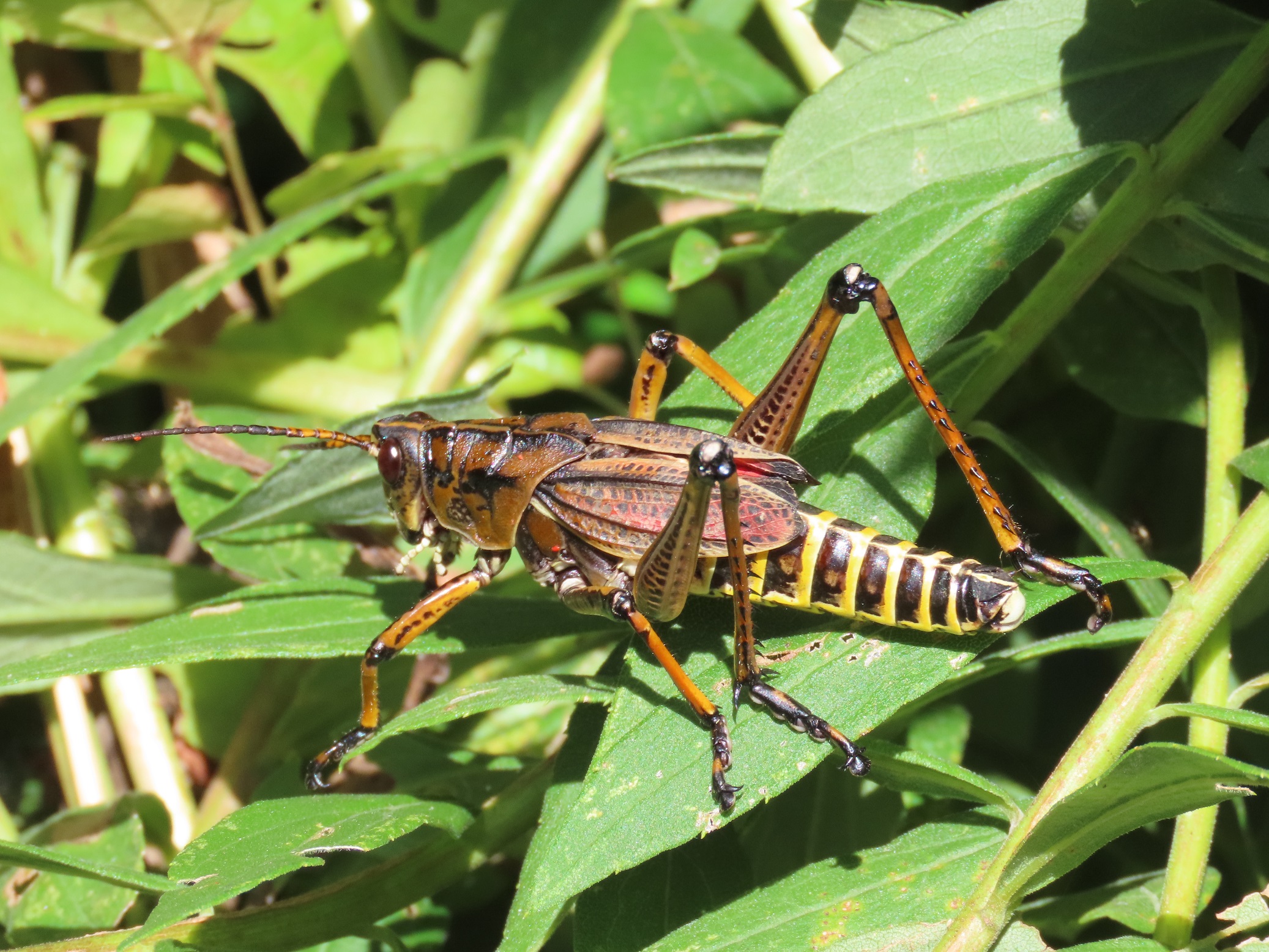
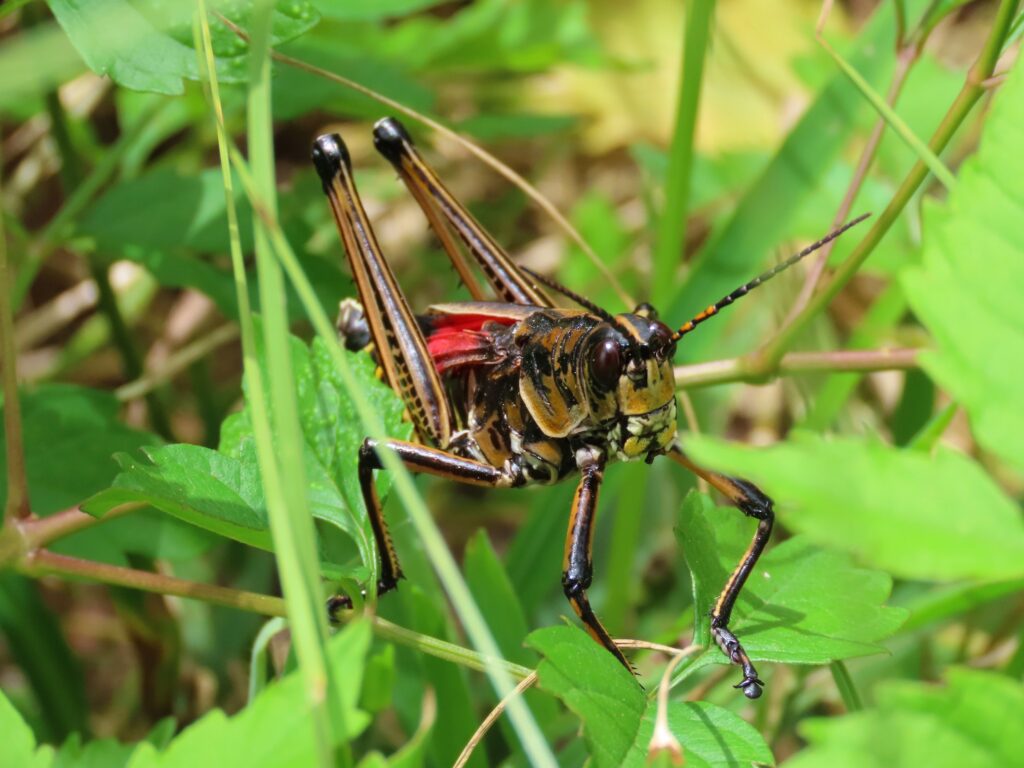
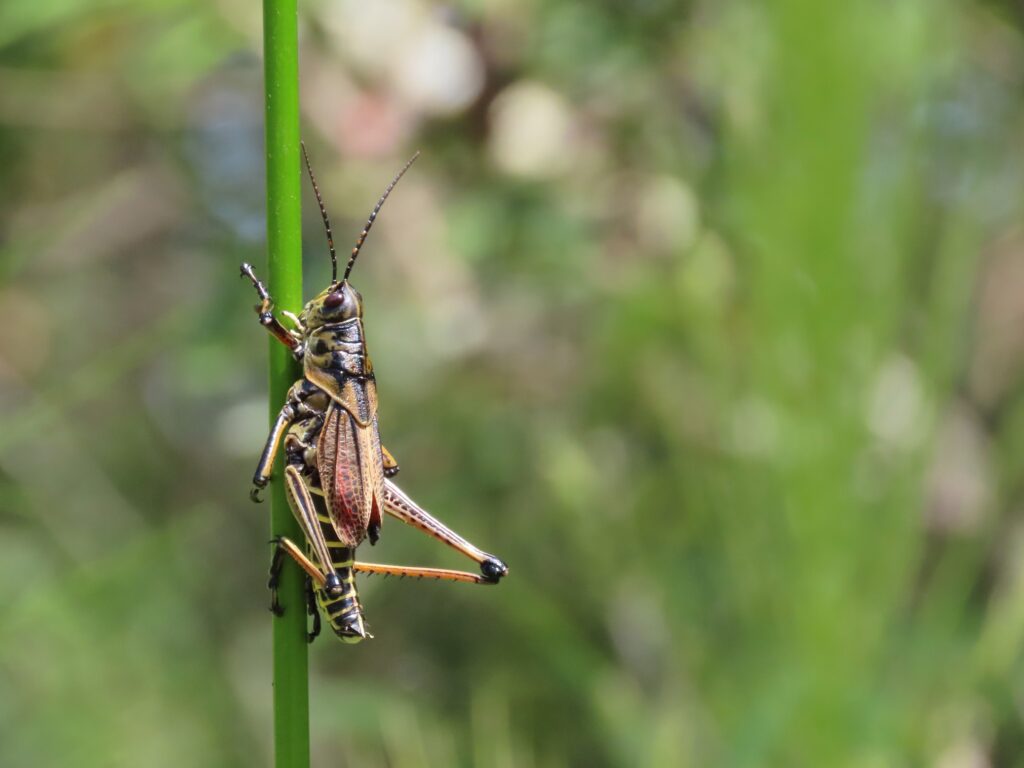
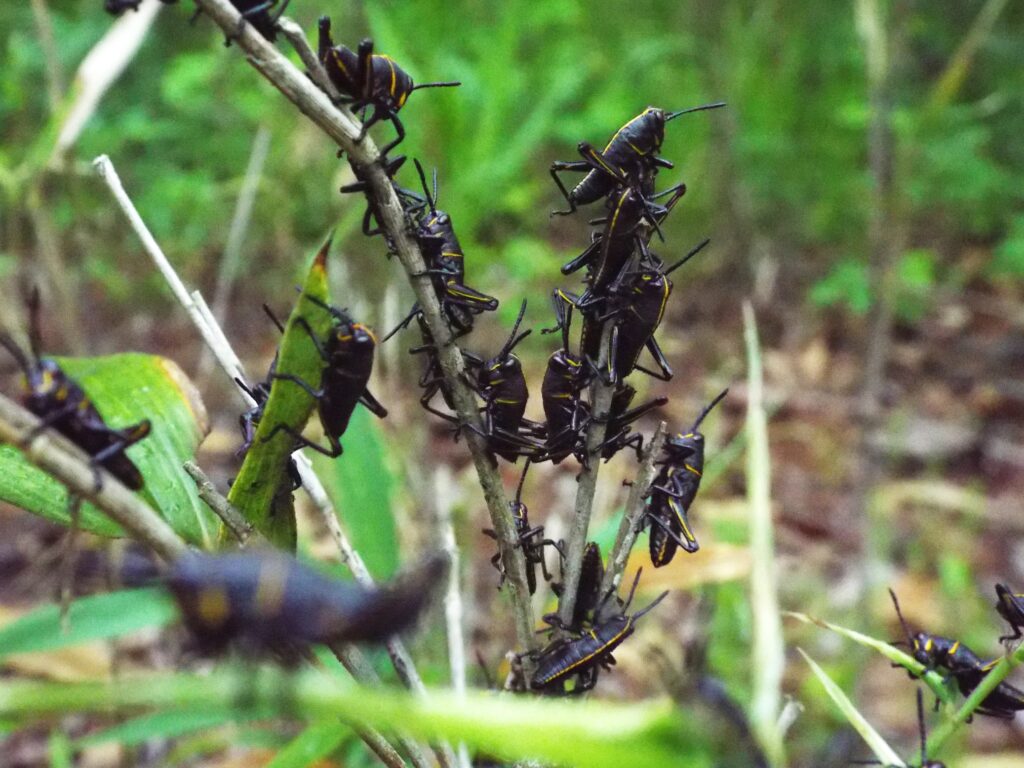
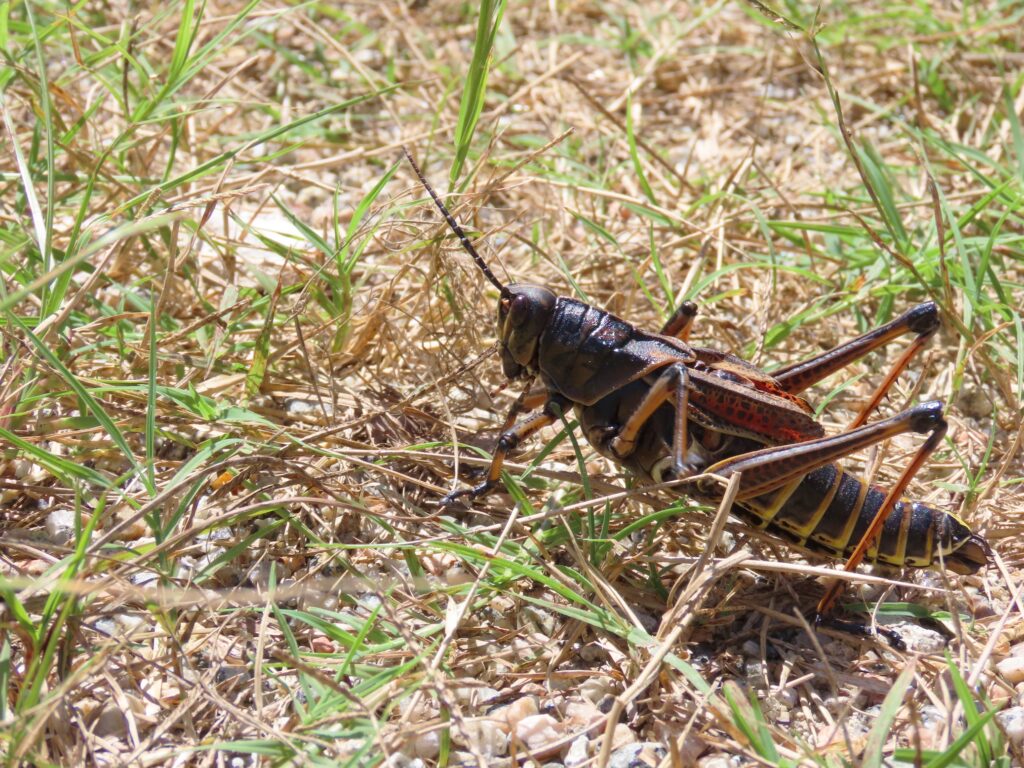
This week for Flora and Fauna Friday we’re taking in the sight of the big, bold, lumbering Eastern Lubber Grasshopper (Romalea guttata).
Each spring, wellsprings of bubbling black masses flow forth from our swamps to scour the forests and freshwater marshes of the Lowcountry. Swarms of Eastern Lubber nymphs emerge from the soil to begin their lives on the surface. Lubber nymphs are about a half-inch long, wingless, and matte-black with lemon-yellow highlights along the fringes of their bodies. Nymphs first start appearing in spring, usually in April, and they will slowly mature throughout the year until they become full-sized adults by September. Adults are downright huge, often three and sometimes four inches in length with a stout, hefty body. Their coloration varies from sunflower-yellow with accents of black and scarlet to nearly solid black with highlights of dingy yellow and red. Adults have tiny, nonfunctional wings and must clumsily saunter and lumber their way over the ground to get anywhere. You’d think this would make them a sitting duck for predators but that bright yellow and red coloration signals their toxicity. Lubbers naturally assimilate plant toxins into their flesh throughout their lives while feeding on a broad selection of forbs and shrubs. They will eat many ornamentals plants that are well known to be toxic and which are avoided by most herbivores. This makes them particularly unpalatable as each Lubber is poisonous in a slightly different way from each of its neighbors. It all depends on what plants it ate growing up. Additionally, they are able to release a foamy chemical cocktail from their sides in order to poison any predator that ignores their warning colors and takes a bite. Other than that, they are harmless to people. Despite their lack of flight, they can climb as well as any grasshopper and their large size means they have a big appetite. They can defoliate shrubs and crops but thankfully they’re scarce enough in South Carolina to never be much of a threat to our farms. However they can wreak a bit of havoc down in Florida.